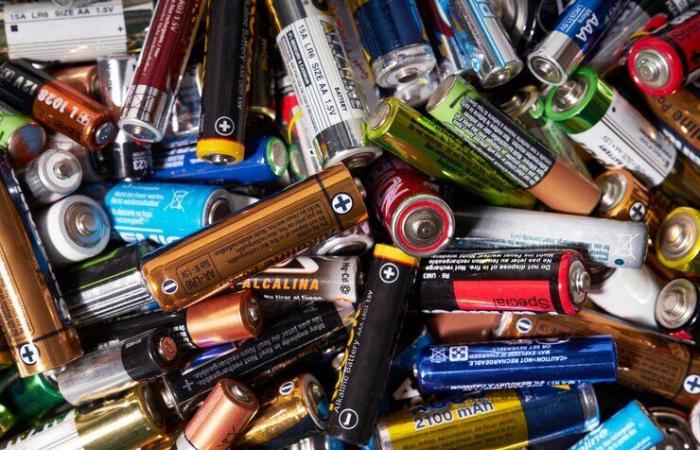The 4th “Global E-waste Monitor” reportprepared by one of the UN bodies – UNITAR (United Nations Institute for Training and Research) in collaboration with the ITU (International Telecommunication Union) and the Carmignac Foundation, shows that the disposal of equipment is increasing at a rate five times greater than recycling all around the world.
According to the study, in 2022, 62 million tons of used electrical equipment were generated worldwide, a record number, which represents 82% more than in 2010. This quantity would be enough to fill 1.55 million trucks of 40 tons, enough to encircle the Equator. By 2030, the amount of waste produced is expected to increase by another 33%, reaching 82 million tons worldwide.
Only 22% of electrical equipment will have been properly collected and recycled in 2022, which corresponds to 62 billion dollars in resources that are not used and will contribute to increased pollution, with serious consequences for public health and the environment.
The forecast is that the global recycling rate will fall to 20% by 2030 given the rate of disposal. Factors contributing to this estimate include technological progress, increased consumption, limited repair options, shorter product life cycles, the increasing electrification of society, design deficiencies and insufficient recycling infrastructure in some countries of the world.
The report also highlights that if countries were able to increase electronic waste collection and recycling rates to 60% by 2030, the benefits – including the minimization of risks to human health – would exceed the costs by more than $38 billion.
Valuable resources, which the European Union has already identified as critical raw materials essential for the ecological and digital transition, worth several million dollars, are wasted, burned or landfilled around the world. Currently, only 1% of rare materials comes from recycling. This is a scenario that Europe intends to change, which involves increasing recycling levels.
O Electron, one of the entities that manages end-of-life electrical equipment in Portugal, recalls that there is a long way to go so that the country and the world can present better results in this area. Portugal is part of a group of countries, already flagged by the European Commission, that is at serious risk of failing to meet the 2025 target of preparation for reuse and recycling defined for urban waste, which includes used electrical equipment.
To contribute to increasing the collection and recycling of electrical equipment at national level, the entity has reinforced its own collection network and has invested in proximity to citizens by offering innovative services, such as the door-to-door collection of household appliances. , currently available in six municipalities in the Lisbon Metropolitan Area: Almada, Lisbon, Loures, Moita, Odivelas and Seixal.
The accumulation of obsolete equipment by individuals and companies is one of the reasons that hinders the evolution of recycling, but there is another worrying problem, which Electrão has already insistently warned about: the parallel market. Thousands of tons are diverted every year from the formal recycling circuit to the parallel market. This practice implies serious harm to public health and the environment, as these devices are treated without ensuring their decontamination.
“It is imperative to monitor and sanction economic agents operating in this market. Only with the concerted action of all responsible entities will it be possible to combat this scourge and put the country on the path to meeting collection targets”, he highlights Pedro Nazareth, CEO of Electrão.
The role of the citizen is equally important to continue improving results, but it is also urgent to involve all agents in the value chain in this challenge, from local authorities, through producers, distributors, operators, organizations, guardianship and inspection entities.
Pedro Nazareth also highlights that the new guidelines that are emerging from Europe have been changing some concepts that can influence the way in which collection and recycling targets are calculated, as is the case with the concept of quantity available for collection. “We understand that this can be a response to the challenge of the circular economy. This concept for the first time removes the focus from collection and recycling based on consumption or the estimate we make of waste production and evaluates recycling based on what is actually available to collect and recycle, as a product of our consumer society”, he analyzes .
This change represents a paradigm shift and seeks to respond to the challenges of the circular economy. “With a more circular economy, which presupposes greater reuse of products in the consumption phase, what is expected is that the waste to be managed will decrease and not increase”, highlights Pedro Nazareth.
“On the one hand, we will have management entities collecting waste to achieve recycling targets. On the other hand, here we have a set of initiatives to promote the circular economy that want to retain products in the consumption phase, preventing the waste necessary to meet collection and recycling targets from being generated. It is a paradox of the circular economy to which regulation seeks to respond with a new concept for meeting the target”, he emphasizes.
This concept was applied to the regulation of used cells and batteries, but could extend to the management of used electrical equipment and could even be applied in the context of packaging.
Electrão Results
Despite the global panorama, 2023 was a standout year for the recycling of electrical equipment in Portugal, with more than 27 thousand tons of this waste being collected and sent for treatment by Electrão. This is the best result in recent years and represents an increase of 16% compared to 2022, with an additional 3,800 tons, and a 67% increase compared to 2021, with an additional 10,600 tons collected.
The Electrão network currently makes 11,500 points available to citizens where used electrical equipment can be placed. There are 3,000 more than in the previous year, which represents a growth of 35%. This means that there is at least one collection site for every thousand inhabitants.
This network was responsible for collecting more than half of the total waste. There was also an increase of 23% compared to the previous year’s collections, which went from 16 thousand tons in 2022 to more than 20 thousand tons in 2023.
Tags: Global Ewaste Monitor electrical equipment recycled worldwide
--





